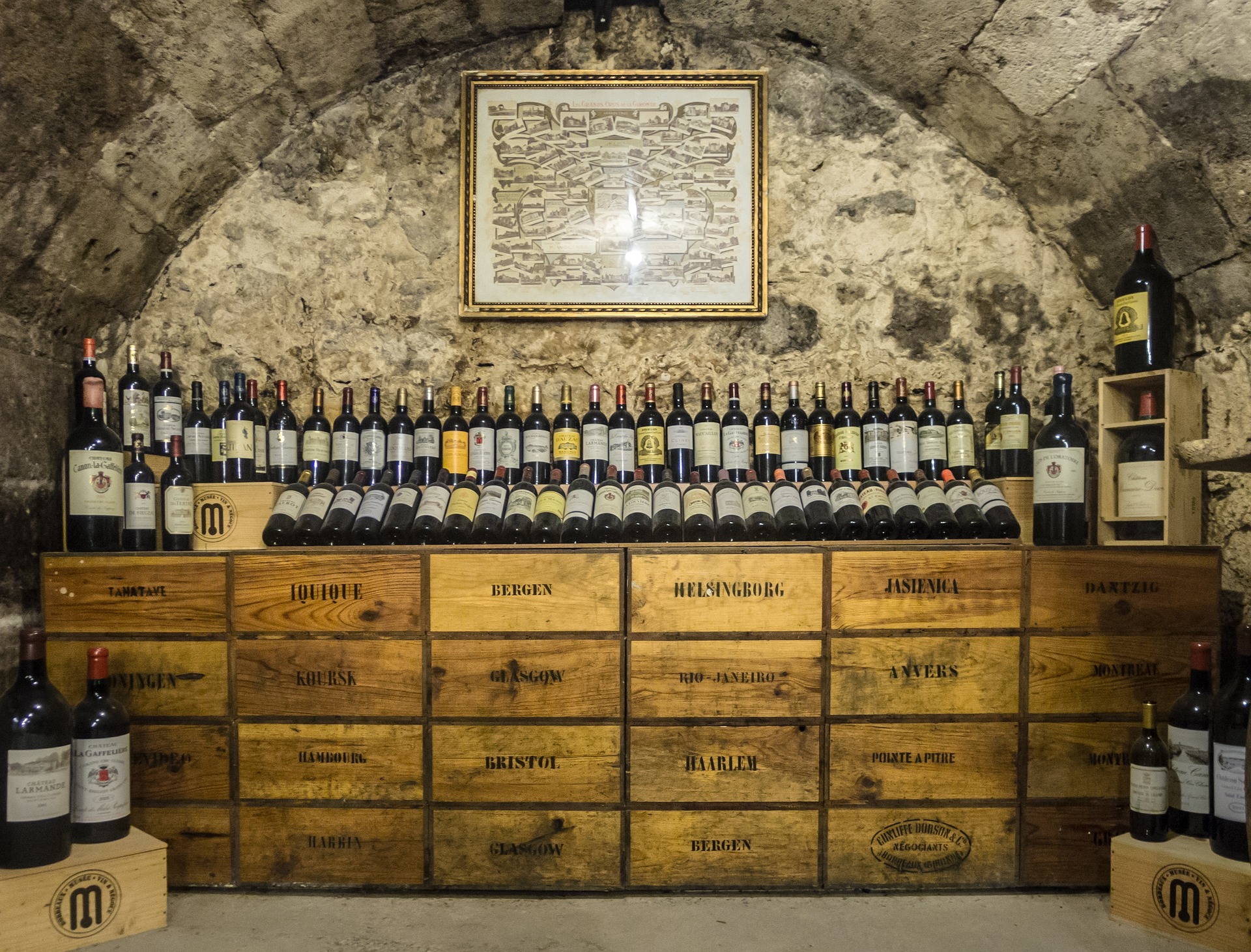A total land area of roughly 111,000 hectares of vineyards producing some of the finest wines in the world. Many references state that Bordeaux is the largest vine growing region in terms of land surface area. The area contains more than 65 appellations of origin that include the world’s renowned and prestigious wines under the umbrella of Bordeaux wine.
A Glimpse of Bordeaux’s Wine History
Many agricultural activities in Bordeaux stretch back to Antiquity. This is thanks to the moderate microclimate of the region that is affected by currents from the ocean and others deriving from inland. However, the history of viticulture in Bordeaux region is often documented with the arrivals of the Romans. The latter civilization introduced its own vine growing practices and techniques to the region for local consumption of the wines.
Nevertheless, the current organoleptic properties of Bordeaux wines that we enjoy today pertains to a specific time period. The Duchy of Aquitaine and the Angevin Empire who both ruled the area that houses Bordeaux, managed the rules and specifications of production. Many kingdoms have risen and fallen and the control over the region exchanged hands so many times. Throughout history, tensions were especially heightened between Catholics and Protestants factions aligned with other countries including Britain, Scotland and France. This elongated conflict has dramatically introduced many changes in the area over the years which are reflected in the wines’ creation methods of the region.
Grapes Varieties Used for Bordeaux Wine Types
Bordeaux wine types are mainly red and white. Where winemakers sometimes use the same varieties to produce both types of wines as well as rosé ones, Bordeaux’s wines are very strict in their classifications. Hence, you can clearly see that the red wines’ grape varieties are very different from those of the white ones. The main red varieties in use are:
- Merlot
- Cabernet Sauvignon
- Cabernet Franc
Of course, some other varieties are common but in minor amounts such as Carménère, Petit Verdot as well as Malbec. The wine blends have to follow a strict percentage proportion. Moreover, the winegrowing activity and the production of the wine, both adhere to a specific processes inherited from one generation to the next and is closely tied to the “Terroir” of the region.
The Concept of Terroir for Bordeaux Wines

The concept of Terroir is as old as agricultural activates initiation on the face of earth. It is a biologically engineered processes that favors the best varieties to be grown coupled with human ingenuity in making the plant species adapt to the stresses of the environment. These stresses can be biological coming from pests and other living microorganisms. On the other hand, they can be abiotic, meaning that they derive from that of the climate such as sunshine, rain, wind, temperature and the likes.
As for grapes, these were grown for centuries in different parts of the globe and were transported over oceans and lands from one continent to the next. This has increased the richness, varieties and winemaking practices. Moreover, it intensified the complexity of winegrowing as pathogens were also imported with vine trees. One of the most famous pathogens that almost wiped out the entire European grape varieties in the 1800s was the phylloxera. The infestations of the pathogen were deeply damaging in Europe as it originally came from the American continent. The vineyards in Europe and specifically Bordeaux were accustomed to a specific terroir in terms of terrain, soil, climate, typography and could not resist the newly arriving pathogens. Hence, to avoid strong pesticides and chemical usages, the grapes were grafted. The latter is an agricultural practice known as grafting, that is still common in our present day. A rootstock is infused with the upper part of the vine tree, thus yielding a new mixed vine-tree where each part is coming from a different variety.
Today, the vineyards of Bordeaux stand tall facing the historical stresses that tried to wipe them out and was not victorious. Moreover, the terroir of the region helps in the expression of the finest genetics of the grape varieties. The agronomist have engineered the practice of growing the vines in the best practices possible. Also, the wine master who studies oenology for several years understands the intricate details of the varieties and the best blending methods to produce the finest wines.
Best Chateaux to Live the Bordeaux Experience
Most visitors to this region claim walking inside a painted piece of artwork. We tend to agree, as this place is truly charming and is an open air naturally crafted museum. Below are some of the best journeys through the chateaus of the region.
The production of Bordeaux wines is a complex and a long process with the use of traditional methods. The industry is heavily regulated with appellations and many production labels like Médoc, Blaye-Côtes de Bordeaux and many others with sophisticated methods to produce a world of rich experiences put in one bottle of wine.






